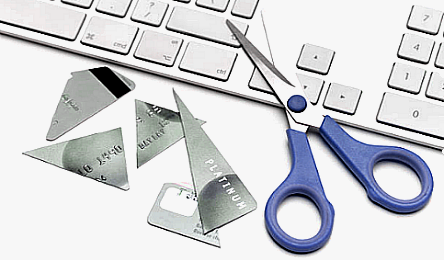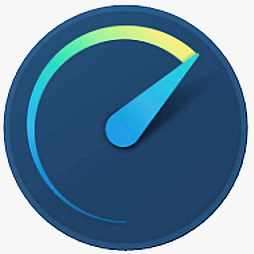Accredited InvestorsAltcoinAnatoli UnitskyAnti-Money Laundering (AML) In CryptoAPIArbitrageArtCoin TokenArticle DirectoryASICAuction Terminology GlossaryBasics of Stock Market InvestingBear MarketBest Crypto Payment Provider In the WorldBitcoinBlockchainBlockchain ConfirmationBlockchain Consensus MechanismBlockchain ForkBlockchain GlossaryBored Ape Yacht ClubBuild a Business That OutperformsBull MarketBuying SkyWay SharesByzantine Fault Tolerance (BFT) ExplainedCasascius CoinCentral Bank Digital Currency (CBDC)Centralized Crypto ExchangeCoinCoinsetCold WalletCollateralCommodity Futures Trading Commission (CFTC)Cross-Chain TechnologyCRUCrypto ExchangeCrypto GlossaryCrypto JokesCrypto Terms to KnowCrypto TickerCryptocurrencyCryptographyCryptojackingCryptounit BlockchainCryptounit GlossaryCryptounit ProgramdApp (Decentralized Application)Dead CoinDecentralized Exchange (DEX)Decentralized Finance (DeFi)Difference Between Bitcoin and EthereumDifferent Ways of Investing MoneyDigital CurrencyDistributed LedgerDo Your Own Research (DYOR)Dollar Cost Averaging (DCA)Dow Jones Industrial Average (DJIA)EncryptionERC-20ERC-721EthereumEvoScentFear Of Missing Out (FOMO)Fear, Uncertainty and Doubt (FUD)Fiat MoneyFNT Fintech CompanyGenesis BlockGlobal Unit PayGlossary of Banking TermsGlossary of Business TermsGlossary of Financial TermsHalvingHODLHot WalletHow Do I Start InvestingHow Rich is Satoshi Nakamoto?How to Create a BlockchainHow to Find Private InvestorsHow to Get Into FintechHow to Program Smart ContractsI Am Thrilled to Be a Part of This Global ProjectInitial Coin Offering (ICO)Initial Public Offering (IPO)Initial Token Offering (ITO)Innovation Basalt TechnologyInnovative Transportation TechnologiesInternational Bank Account Number (IBAN)Investing in Gold Mining StocksInvesting in Gold MiningJagerJoy of Missing Out (JOMO)Know Your Customer (KYC)LedgerLiquidity in CryptocurrencyMaker and Taker Fees in Crypto TradingMarket Capitalization (Market Cap)Meme CoinMetal Credit CardMetaMaskMillenials Now Have Access to Generational WealthMy Best Investment EverNew Digital EvolutionNFT GlossaryOff-Chain TransactionsOn-Chain TransactionsOpen Edition NFTPeer-to-Peer (P2P)Personal Loan GlossaryProbably the Best STO on the MarketProof of Stake (PoS)Real Estate Glossary of TermsReal Estate Investing GlossaryRebase TokenSecurities and Exchange Commission (SEC)Security Token ExchangesSecurity Token Offering (STO)Soulbound Decentralized Identities for Security TokensSoulbound ID Launch by Stobox Proves a SuccessSoulbound TokensStoboxStock Market GlossaryTestimonialsTether Platform and Token (USDT)UnitEx ExchangeUnitsky String TechnologiesUNTBUSDUValidatorWe Started Investing When We Were 25What are Blue Chip NFT?What are Blue Chip Stocks?What are Crypto Assets?What are Crypto Smart Contracts?What are CryptoPunks NFT?What are Digital Assets?What are Digital Collectibles?What are Gas Fees?What are Gas Wars?What are Hashmasks?What are Non Fungible Tokens?What are Non-Sufficient Funds (NSF)?What are Soulbound Tokens (SBT)?What are Stablecoins in Crypto?What are Transactions Per Second (TPS)?What are Utility NFTs?What are Utility Tokens?What Does Burning Crypto Mean?What Does Diamond Hands Mean?What Does Paper Hands Mean?What Does To The Moon Mean?What Does WAGMI Mean?What Happened to Satoshi Nakamoto?What is a 51% Attack?What is a Baby Boomer?What is a Backlink?What is a Banner?What is a Barcode?What is a Bid-Ask Spread in Crypto?What is a Block in Blockchain?What is a Block Reward?What is a Blockchain Address?What is a Blockchain Node?What is a Blockchain Oracle?What is a Blog?What is a Bond?What is a Bot?What is a Broker?What is a Business Accelerator?What is a Cash Cow?What is a Commercial Bank?What is a Commodity?What is a Con?What is a Credit?What is a Credit Limit?What is a Credit Rating?What is a Crypto Airdrop?What is a Crypto Bridge?What is a Crypto Scam?What is a Crypto Token?What is a Crypto Wallet?What is a Crypto Whale?What is a Crypto Winter?What is a Cryptocurrency Public Ledger?What is a Cryptocurrency Roadmap?What is a DAO?What is a Dark Pool?What is a Day Trader?What is a Dead Cat Bounce?What is a Default?What is a Derivative?What is a Digital Credit Card?What is a Fiscal Quarter?What is a Fungible Token?What is a Governance Token?What is a Grace Period?What is a Hard Fork?What is a Hot Wallet?What is a Hybrid Blockchain?What is a Hybrid PoW/PoS?What is a Joint Account?What is a Market Cap?What is a Merkle Tree in Blockchain?What is a Mining Farm?What is a Nonce? What is a PFP NFT?What is a POS System?What is a Prepaid Card?What is a Private Blockchain?What is a Private Key?What is a Public Blockchain?What is a Public Key?What is a Reserve Currency?What is a Ring Signature?What is a Routing Number?What is a Rug Pull in Crypto?What is a Safe Deposit Box?What is a Satoshi?What is a Security Token?What is a Seed Phrase?What is a Shitcoin?What is a Sidechain?What is a Soft Fork?What is a Spot Market?What is a State Bank?What is a SWIFT Code?What is a Tax Identification Number (TIN)?What is a Time Deposit?What is a Transaction Account?What is a Variable Interest Rate?What is a Virtual Assistant (VA)?What is a Virtual Card?What is a Virtual Currency?What is a Visa Card?What is a Whitelist in Crypto?What is a Whitepaper?What is Accounts Payable (AP)?What is AMA in Crypto?What is Amortization?What is an Accrual?What is an ACH Transfer?What is an Actuary?What is an Addendum?What is an Algorithm?What is an Angel Investor?What is an Annuity?What is an Asset?What is an ATM?What is an Atomic Swap?What is an Audit?What is an Avatar?What is an EIN?What is an Embargo?What is an Entrepreneur?What is an IDO (Initial Dex Offering)?What is an Interest Rate?What is an Internet cookie?What is an Investment Bank?What is an NFT Drop?What is an NFT Floor Price?What is an Ommer Block?What is an Orphan Block?What is an Outstanding Check?What is an Overdraft?What is Artificial Intelligence (AI)?What is B2B (Business-to-Business)?What is B2G (Business-to-Government)?What is Bartering?What is Bitcoin Dominance?What is Bitcoin Pizza Day?What is Blockchain Immutability?What is Blockchain Used For?What is BRICS?What is Business-to-Consumer (B2C)?What is C2C (Customer to Customer)?What is Capitalism?What is Catfishing?What is CFD Trading?What is Check Kiting?What is Cloud Mining?What is Communism?What is Content Marketing?What is Decentralization in Blockchain?What is DeFi in Crypto?What is Delisting?What is Depreciation?What is Digital Marketing?What is Diversification?What is Double Spending?What is Dumb Money?What is Dumping?What is Earnings Per Share (EPS)?What is Economics?What is Email Marketing?What is Equity?What is Etherscan?What is Fintech?What is Foreign currency?What is Forex?What is Fundamental Analysis (FA)?What is GameFi?What is Generative Art NFT?What is Gwei?What is Hard Currency?What is Hash Rate?What is Hashing in Blockchain?What is Inflation?What is Initial Game Offering (IGO)?What is Interest?What is Interest Income?What is Mainnet?What is Mastercard?What is Metaverse in Crypto?What is Mining in Cryptocurrency?What is Minting NFT?What is Mobile Banking?What is Money Laundering?What is NFT Alpha?What is NFT Metadata?What is NFT Rarity?What is NGMI Meaning?What is Nominal Interest Rate?What is Online Banking?What is Open-End Credit?What is OpenSea NFT Marketplace?What is Personal Identification Number (PIN)?What is Play-to-Earn?What is Polygon?What is Proof of Authority (PoA)?What is Proof of Work (PoW)?What is Public Key Cryptography?What is Pump and Dump?What is Quantum Computing?What is Refinancing?What is Retail Banking?What is Ripple?What is Sharding?What is Slippage in Crypto?What is Smart Money?What is Solvency?What is Soulbound ID?What is SSL?What is Staking in Cryptocurrency?What is Technical Analysis (TA)?What is Testnet?What is the Ask Price?What is the Better Business Bureau (BBB)?What is the Bid Price?What is the Dark Web?What is the InterPlanetary File System (IPFS)?What is the Gold Standard?What is the Lightning Network?What is the Prime Rate?What is the Sandbox?What is the Secondary Market?What is the World Bank?What is Tier 1 Capital?What is Tokenomics?What is TRC-20?What is Universal Banking?What is Unspent Transaction Output (UTXO)?What is Usury?What is Volatility in Crypto?What is Wash Trading?What is Web3?What is Whisper?What is XRP?What is Zero-Knowledge Proof (ZKP)?Who is Beeple?Who is Satoshi Nakamoto?Who is Vitalik Buterin?Why Tokenization is a Safe HavenWhy You Should Try Your Hand at Trading
What is Open-End Credit?
- Home
- Glossary of Banking Terms
- What is Open-End Credit?
When in need of financial assistance, borrowing money may become necessary, whether it's for a new home loan or emergency expenses requiring a credit card.

However, it's crucial to understand that credit typically falls into two categories: open-end and closed-end. These forms of credit differ in their operations, benefits, drawbacks, fees, and terms, and they can also affect your credit score differently.
What is Open-End Credit?
Open-end credit is a type of credit that is commonly referred to as revolving credit. This type of credit is typically offered by financial institutions, such as banks or credit unions, and allows consumers to borrow money on an as-needed basis. Open-end credit is different from closed-end credit, which is a type of credit that is repaid in fixed installments over a set period of time.
How Does Open-End Credit Work?
Open-end credit is a flexible type of credit that allows borrowers to access funds up to a pre-approved credit limit. The borrower can borrow as much or as little as they need, up to the credit limit, and pay interest only on the amount borrowed. As the borrower repays the borrowed funds, their credit limit is replenished, allowing them to borrow again as needed.
One of the key features of open-end credit is its revolving nature. Unlike closed-end credit, which is a one-time loan, open-end credit is ongoing. This means that the borrower can continue to use the credit as long as they remain in good standing with the lender and do not exceed their credit limit.
Types of Open-End Credit
There are several types of open-end credit that consumers can access. The most common types of open-end credit include:
- Credit Cards: Credit cards are a type of open-end credit that allows consumers to make purchases up to a pre-approved credit limit. The borrower can choose to pay the balance in full each month or make minimum payments and carry a balance.
- Lines of Credit: A line of credit is a type of open-end credit that allows borrowers to access funds up to a pre-approved credit limit. Lines of credit can be secured or unsecured, and borrowers may use the funds for a variety of purposes.
- Home Equity Lines of Credit (HELOCs): HELOCs are a type of open-end credit that allows homeowners to borrow against the equity they have built up in their homes. The borrower can access funds up to a pre-approved credit limit and pay interest only on the amount borrowed.
Advantages of Open-End Credit
Like any type of credit, open-end credit has its advantages and disadvantages. Some of the advantages of open-end credit include:
- Flexibility: Open-end credit allows borrowers to access funds as needed, which can be useful for unexpected expenses or emergencies.
- Lower Interest Rates: Open-end credit often comes with lower interest rates than other types of credit, such as payday loans or credit cards.
- Credit Building: Using open-end credit responsibly can help borrowers build a positive credit history and improve their credit score.
Disadvantages of Open-End Credit
- High Interest Rates: While open-end credit often has lower interest rates than other types of credit, the interest rates can still be high, especially for borrowers with lower credit scores.
- Fees: Open-end credit may come with fees, such as annual fees, late payment fees, or over-the-limit fees.
- Temptation to Overspend: Open-end credit can be tempting to overspend, as borrowers may have easy access to funds and a revolving credit limit.
Open-End vs Closed-End Credit
Open-end credit, such as credit cards, allows you to borrow money up to a certain limit and pay it back on a flexible schedule. The amount of credit available to you replenishes as you pay down your balance, and you can continue to use the credit line as long as you make your payments on time. This type of credit can be useful for managing ongoing expenses, emergencies, or unexpected costs that may arise.
On the other hand, closed-end credit, also called installment credit, such as personal loans or mortgages, provides you with a lump sum of money upfront that you repay over a set period of time. You can't borrow any additional funds once the loan is disbursed, and you're required to make regular payments on a predetermined schedule until the loan is paid in full.
Closed-end credit is often used for one-time expenses, such as buying a car or financing home improvements. Both types of credit have their advantages and disadvantages, and it's important to understand the differences between them before making a decision.
Open-end credit can be more flexible but may come with higher interest rates and fees, while closed-end credit offers a fixed repayment schedule but may require more upfront costs and collateral.
Related Articles

What is a Credit?
Credit is a financial term that refers to the borrowing of funds that are expected to be repaid within a specified period of time.

What is a Credit Limit?
A credit limit is the maximum amount of money that a financial institution, such as a credit card company, is willing to lend to a borrower.

What is a Credit Rating?
A high credit rating can enable a borrower to negotiate better terms with lenders, and it can also open up more opportunities for investment.
- Home
- Glossary of Banking Terms
- What is Open-End Credit?